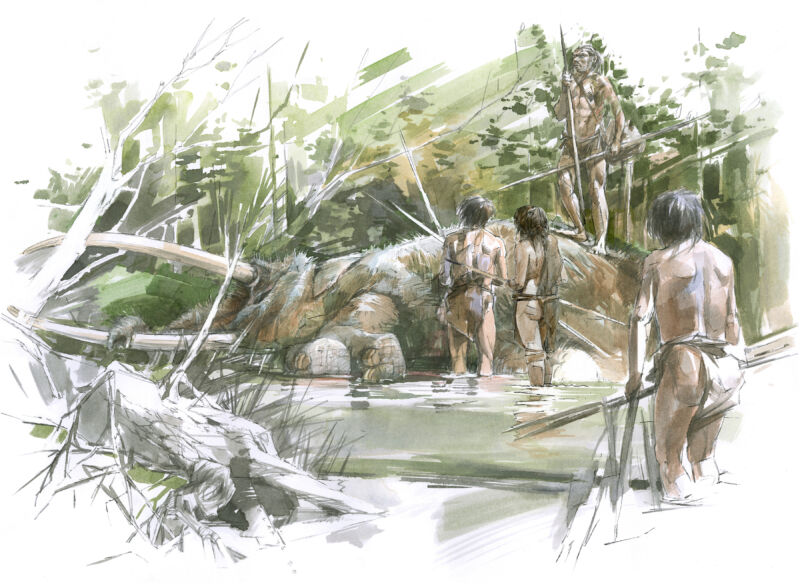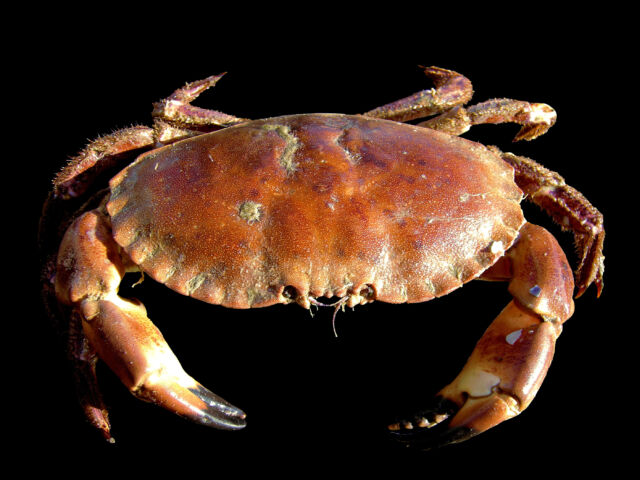Neanderthals spread diverse cultures across Eurasia (before we came along)

Two recent studies of Neanderthal archaeological sites (one on the coast of Portugal and one in central Germany) demonstrate yet again that our extinct cousins were smarter and more adaptable than we’ve often given them credit for. One study found that Neanderthals living on the coast of Portugal 90,000 years ago roasted brown crabs—a meal that’s still a delicacy on the Iberian coast today. The other showed that 125,000 years ago, large groups of Neanderthals came together to take down enormous Ice Age elephants in what’s now central Germany.
Individually, both discoveries are fascinating glimpses into the lives of a species that’s hauntingly similar to our own. But to really understand the most important thing these Neanderthal diet discoveries tell us, we have to look at them together. Together, they show that Neanderthals in different parts of Europe had distinct cultures and ways of life—at least as diverse as the cultures that now occupy the same lands.
Neanderthal beach party
On the Iberian coast 90,000 years ago, groups of Neanderthals living in the Gruta de Figueira Brava cave spent their summers catching brown crabs in tide pools along the nearby shore, then feasting on crab roasted over hot coals back in the cave.
Among the stone tools and remains of ancient hearths in Gruta de Figueira Brava, archaeologist Mariana Nabais (of the Catalan Institute of Human Paleoecology and Social Evolution) and her colleagues found numerous shells and claws from brown crabs, a sturdy North Atlantic and Mediterranean species with a carapace that makes it look tantalizingly like a meat pie with legs and claws.

Some of the shells and claws that Nabais and her colleagues found had black scorch marks, which suggested they had been roasted at temperatures between 300° and 500° Celsius; boiling or steaming the crabs wouldn’t leave black marks on the shells, but roasting over coals would. Many claws bore a telltale pattern of damage: They’d been hit with something hard right at the base of their claws, opening long fractures that would be perfect for removing the tasty crab meat.
“The marks seen on the archaeological material are very similar to those empirically produced when eating them today,” said Nabais. Brown crabs are still a popular summertime meal for people in Portugal, Spain, France, and Italy, where the crabs migrate to shore during the summer to breed. Some things haven’t changed much in 90,000 years.
Almost all of the crabs Nabais and her colleagues found at Gruta de Figueira Brava were adult males, toward the larger end of the species’ size range (one 16-centimeter-wide crab can yield about 200 grams of meat, for the record). That points to Neanderthals not harvesting crabs with nets, which would have caught a wider range of animals. Instead, they seem to have treated the tide pools as a Paleolithic version of the lobster tank at a seafood restaurant. Except crabs are quick and dodgy, and the wild ones don’t have their claws tied.
Modern people living on other coastlines, like the Wampanoag in Massachusetts or the Nehalem Tillamook in Oregon, have developed very similar ways of crab hunting. The Wampanoag use spears to bonk Dungeness crabs just behind the eyes, stunning the crabs so they’re easy (and safe) to pick up. In some cultures, that’s usually work for men, while in others, it’s mostly a job for women; we have no way to know how—or if!—Neanderthals divided up their tasks.
But we do know that crab roasts on the beach are a very different way of life than the one we usually picture Neanderthals living. “The notion of Neanderthals as top-level carnivores living off large herbivores of the steppe-tundra is extremely biased,” said Nabais. “Such may well apply to some extent to the Neanderthal populations of Ice Age Europe’s periglacial belt, but not to those living in the southern peninsulas.”
Gathering for the feast
Speaking of Ice Age Europe’s periglacial belt, there’s now evidence that large groups of Neanderthals were working together to bring down elephants along the shores of a sprawling lake. Weighing in at 12 tons and standing four meters high at the shoulder, a male straight-tusked elephant would have been about twice the size of a modern African elephant and carried enough meat to feed a group of 25 people for about three months.
https://arstechnica.com/?p=1919279